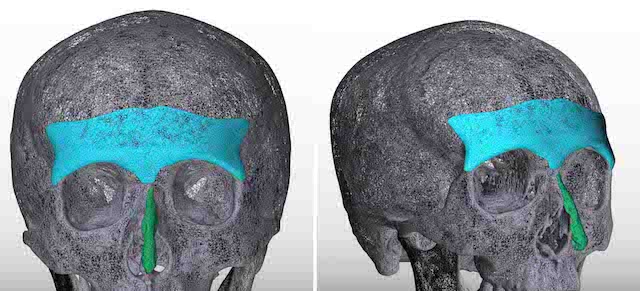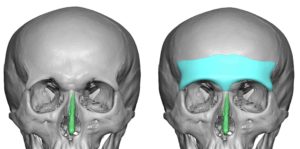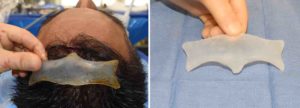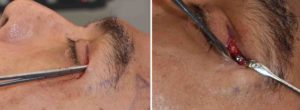Background: One of the key male distinguishing features of the upper third of the face are the brow bones. It is a very gender specific facial feature that truly separates a male vs a female facial appearance. One other aesthetic aspect of having some brow bone protrusion is that it also helps provide some coverage of the eyes and can make them look less protrusive or exposed.
To those men who have adequate brow bone protrusion they understandably take them for granted. But for the man who does not the concept of brow bone augmentation has appeal. Such brow bone augmentation, which is not a frequently performed facial augmentation procedure, has historically been done by a variety of materials and methods. But these typically consist of an open coronal incision for the application for bone cements or to modify other materials into a brow bone shape.
The contemporary brow bone augmentation approach is that of a custom implant method. Beyond the obvious benefits of preoperatively creating an implant design that is specifically made for the patient is that its placement can avoid the need for a coronal scalp incision and be done in as close to s scar-free manner as possible.
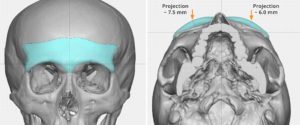
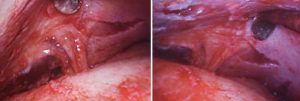

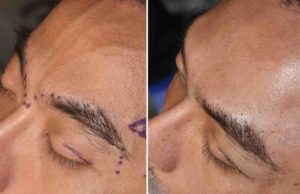
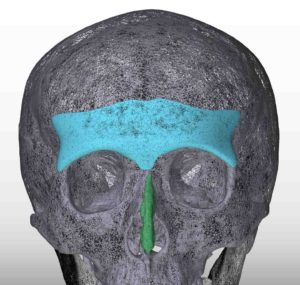
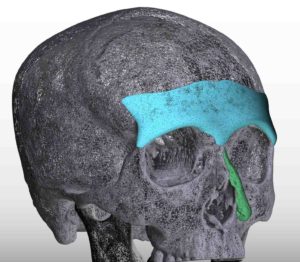
Case Highlights:
1) Male brow bone augmentation is best done using a custom implant approach.
2) Custom brow bone implants are placed using an endoscopic-assisted triangulated incision technique.
3) Getting the implant down low enough on the existing brow bones from one frontozygomatic suture to another is the key in intraoperative placement.
Dr. Barry Eppley
Indianapolis, Indiana

